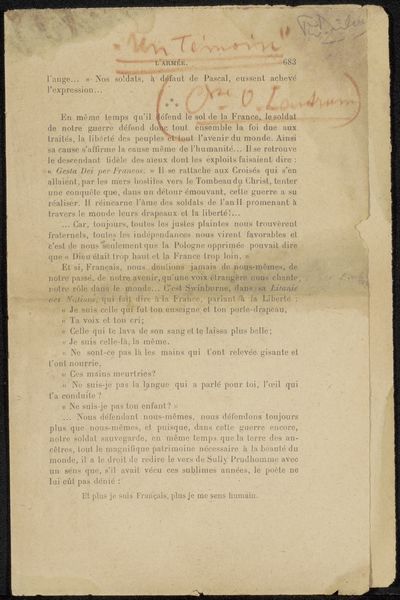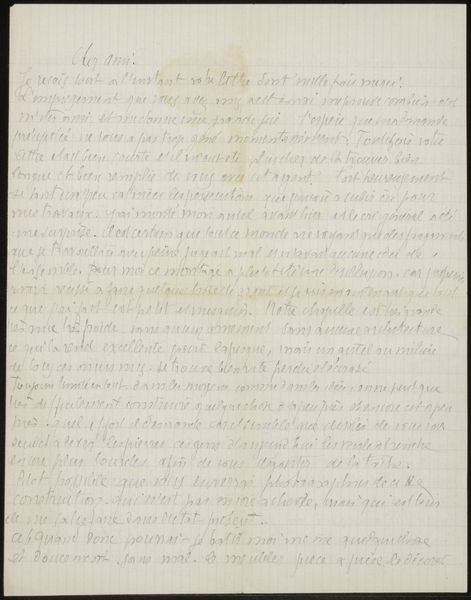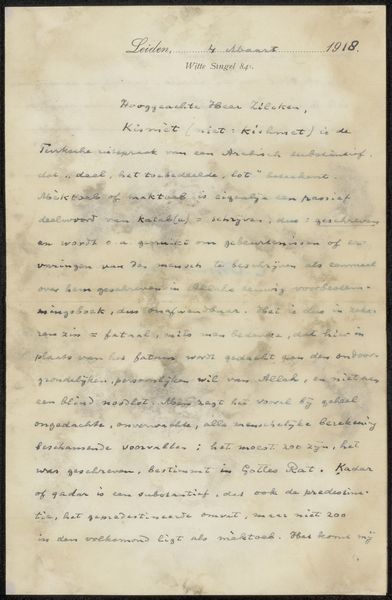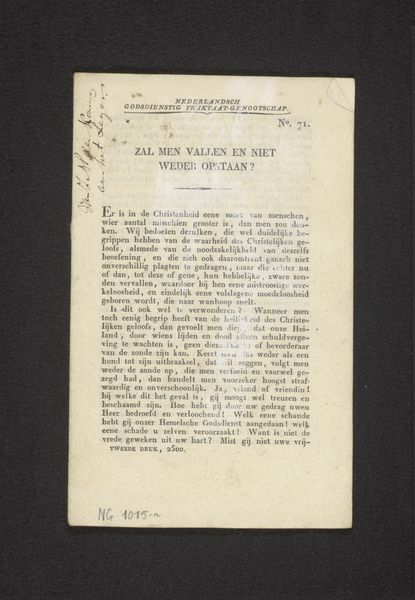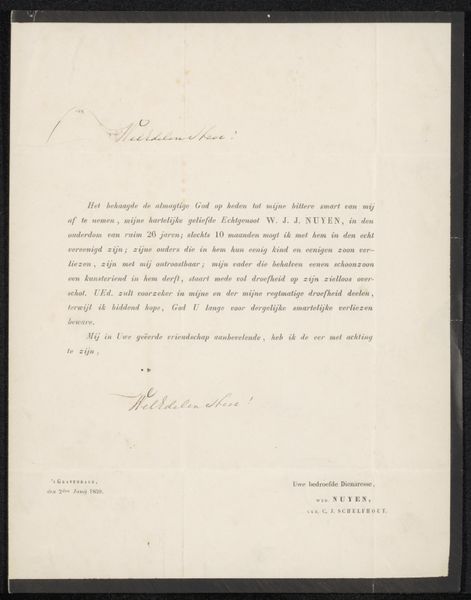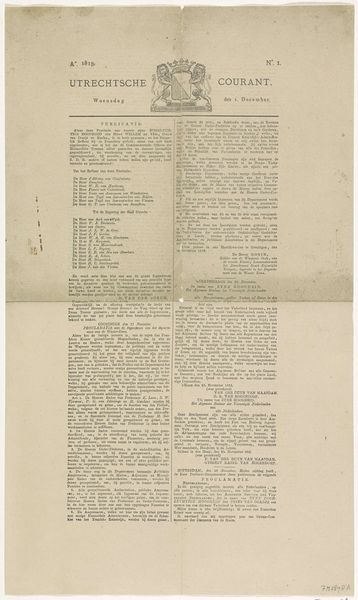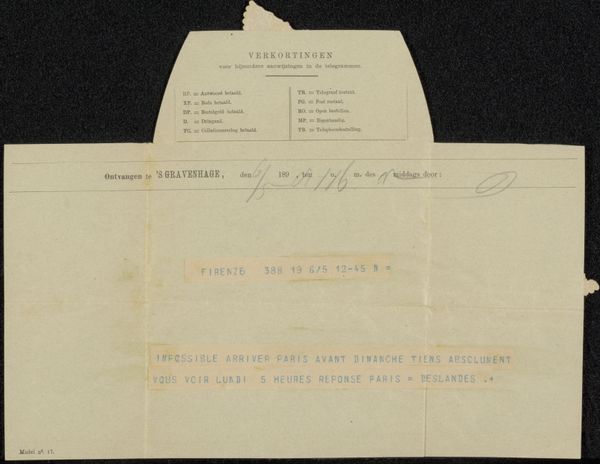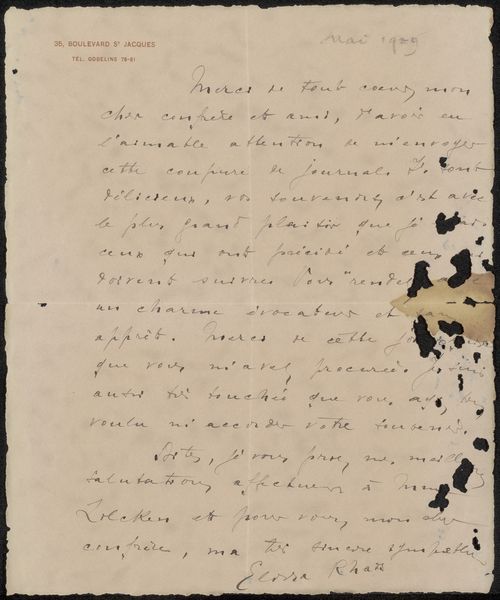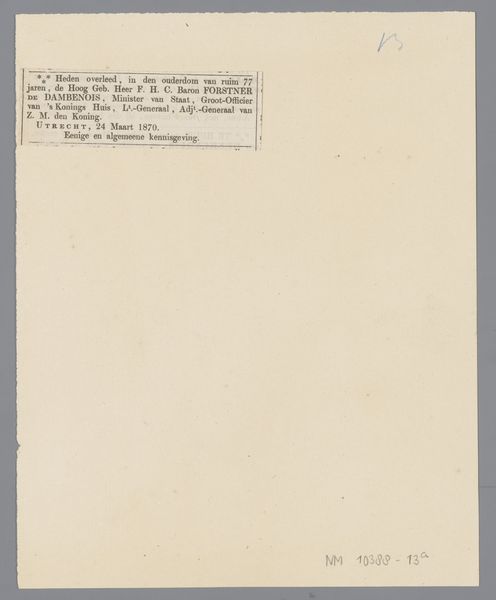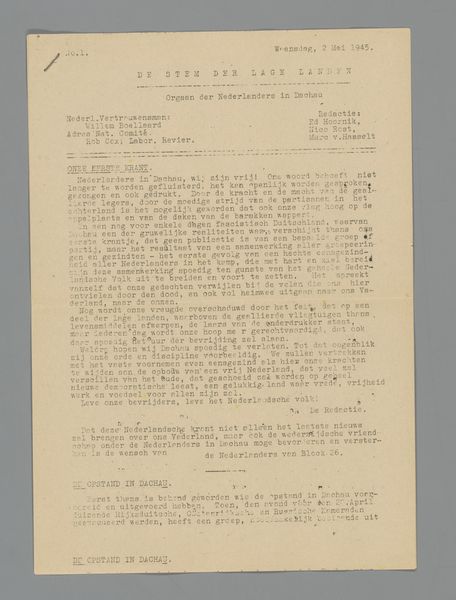
drawing, paper, ink, pencil
#
drawing
#
paper
#
ink
#
coloured pencil
#
pencil
#
calligraphy
Copyright: Rijks Museum: Open Domain
Curator: What draws your eye to this unassuming letter? Editor: This is “Brief aan Philip Zilcken,” or "Letter to Philip Zilcken," from 1905, made with ink, pencil, colored pencil on paper. Honestly, it's a bit of an outlier, more document than artwork. But the handwriting and list of names are intriguing. What do you see in this piece, beyond just a formal invitation? Curator: I see a fascinating glimpse into the social fabric of the art world at the turn of the century. Look closely; this isn't just any letter. It’s a collective effort from the "Arti et Amicitiae," an Amsterdam-based artist society, to honor a colleague, W.C. Nakken, on his 70th birthday. It unveils a community built on mutual respect and artistic collaboration. Think about the cultural significance of artists supporting each other in a time without the institutional frameworks we have today. Editor: So it's less about the visual artistry and more about the societal context? Curator: Exactly! Consider the role of such societies in shaping artistic careers and aesthetic movements. They served as networks of patronage, exhibition spaces, and platforms for the exchange of ideas. Moreover, look at the names listed at the bottom – prominent artists of their time! It suggests an established, influential circle. Do you think that belonging to such a circle influenced their practices or their recognition? Editor: It must have. Knowing who was in that group helps contextualize the power dynamics. I wonder how inclusive such groups were then, particularly in terms of gender or background? Curator: An important question. Historians have often highlighted the exclusivity of such circles. Their impact on the trajectory of art history is undeniable. Reflecting on this document as a fragment of social history challenges the common narrative of the solitary artist. Editor: I've definitely learned to consider the letter beyond its surface, as a product of artistic networks and potential cultural gatekeeping! Curator: Precisely! It invites us to explore broader social and political implications of artistic production.
Comments
No comments
Be the first to comment and join the conversation on the ultimate creative platform.
